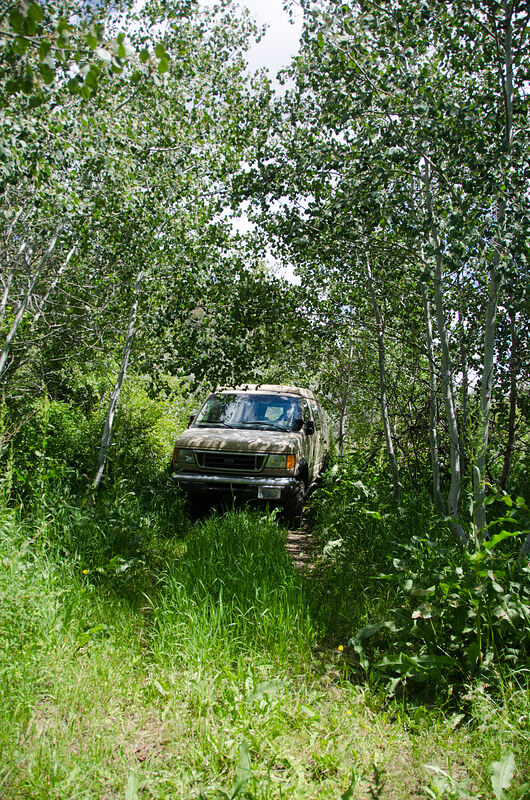Five very important aspects of expedition vehicle ownership are absent from this discussion: wheelbase, weight, length, height and GVWR. The last thing on anybody’s list should be horsepower or freeway speed. Don’t forget our beloved legacy Unimogs only came with only 120 HP.
I’d advise anybody looking at one of these vehicles to be very conscience of wheelbase length. The longer the wheelbase, the more apt you are got get high centered off road. The ER is a beautiful truck, but lordy, it’s a block and a half long.
Weight is important if you are going to be overlanding in the west. We cross many USFS bridges with 5 or 7 ton weight limits. Some of the LMTV conversions, larger GXV trucks, and Euro rigs weigh in at 20,000 pounds plus. And what do you do if you get a 10 ton truck stuck off road? A Jeep won’t be able to budge you an inch. Oh, and those spare tires. Do you really want to try and change a 350# tire?
Length comes into play if you like to tuck into small spots in the forest, enter some National Parks, or park in the parking lot of your favorite craft brewery. My opinion is that anything over 24’ will seriously limit where you can go, both on and off road.
Height will also limit where can you go both on and off road. I think the EC FX is a hair over 10’ tall, which is very manageable. We saw a GXV Kenworth cabover in Wyoming this summer and I swear is was as tall and took up as much room as a municipal trash truck. I’m not sure I want to take a rig that big deep into the forest. BTW, did you notice on the above chart that the Earth Cruiser has a smaller turning distance than the SportMobile? Dang. I wonder how many acres it takes to turn around an ER or one of the Euro trucks.
Finally, GVWR. After you install granite countertops, how much extra weight can you carry? And I’ve seen rigs with motorcycles, kayaks, SUPs, washing machines, and home refrigerators onboard. Gosh, do you really need to haul all that crap around with you? That stuff cost you in fuel mileage and limits where you can go and what you can do. Do you want an impressive pavement queen or a capable off road expedition vehicle?
Think long and hard before you plop your money down. Leave your preconceptions behind and analyze your purchase based on off road capability combined with a reasonable level of comfort. Be realistic. To me, carrying 100 gallons of water (800 pounds) is silly when potable water is readily available using iOverlander. We use an average of 7 gallons a day per person with a shower every two days. 40 gallons works great for us. The next time you are are at your favorite campsite, measure the trail width and make sure you check out how low those tree branches are. Are there wallows or high-center sections of the trail that will trip up a long wheelbase truck? And most of all, pay attention to what kind of vehicles you see on the trail or on a Forest Service road. For every mile you travel up a crappy road, different vehicle types will drop by the wayside. Have you seen your dream vehicle at a the end of your favorite dirt road or trailhead, or is it plugged in at the RV park in town??



